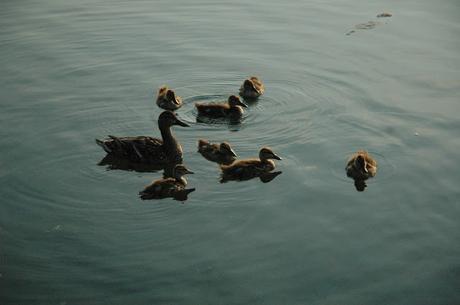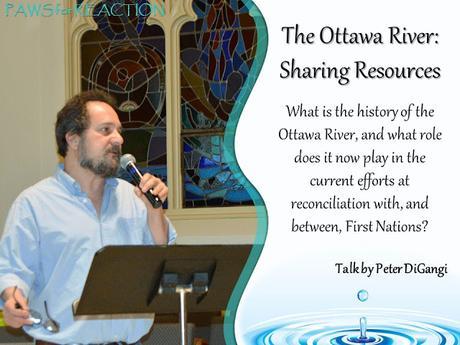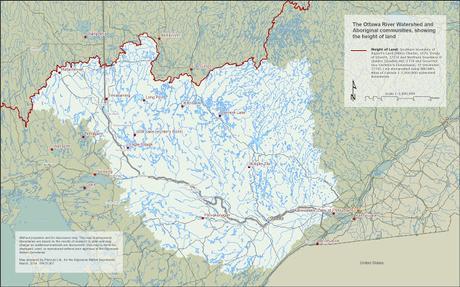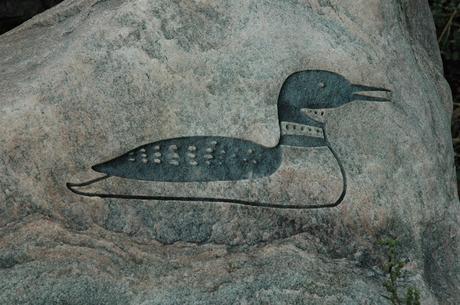
Photo by Stacey McIntyre-Gonzalez Copyright©
“Water is speaking: Are we listening?” That question was posed by Saugeen First Nation Chief Randall Kahgee in the book Boiling Point by Maude Barlow. Water is life- the indigenous people have always known this to be true. Water feeds our bodies, water isour bodies. Water is prosperity; water is safety. Water should be clean. Kahgee’s quote inspired the Living into Right Relations Circle of First United Church to host an event to engage the Ottawa River communities. The event was titled Indigenous Perspectives on Water: Our Sacred Resource and took place over five evenings, from March 8 to April 5 at the First United Church in Westboro. Each session featured a guest speaker(s), music and a water ritual. I had the pleasure of joining the group on March 29 to hear historian and current Director of Policy and Research for the Algonquin Nation Secretariat Peter DiGangi speak about the history of the Ottawa River. Walking in downtown Pembroke you see murals and landmarks celebrating the Ottawa River. In Pembroke, it’s a celebration of the hydro electric industry and our rich logging history. But there is so much about the history of the Ottawa River watershed that I was unaware of. DiGangi told the history of First Nations connection to the Ottawa River, for they are the true caretakers of the water. The river provided so much life and prosperity to their communities, until it was taken away as quickly as the river flows. DiGangi used a map to give us a visual reference to where the events he spoke of took place. As I looked at the map- with the river and waterways flowing through the land like veins, giving life to the landscape- I saw Pembroke and Golden Lake. It really hit home for me, how the river is the life blood of this region.
Photo by Stacey McIntyre-Gonzalez Copyright©
DiGangi graduated from Trent University in 1980 with Honours BA in Native Studies and Anthropology. In 1980 he began working on land claims research for the Union of Ontario Indians and has continued to work in the research field of land rights and policy. DiGangi spent five years at the Assembly of First Nations as Director of the Centre for Treaty Advocacy. He opened the talk with the word “reconciliation” and restoration of friendly relations with First Nations. The Algonquin people were the true stewards of the Ottawa River and yet I learned that they never signed a treaty or have even been compensated for the taking of their lands. A once prosperous tribe, the Algonquin were flooded out by colonization. The Royal Proclamation of 1763, issued by King George III as a way to establish government over the Northern Territories, and with regards to First Nations’ rights, the proclamation states that Aboriginal people reserved all lands not ceded by or purchased from them.

Ottawa River watershed
According to DiGangi, the Royal Proclamation didn’t happen in the Ottawa Valley. What was to come were many fights, struggles and wars for land rights, fueled by colonization, The Hudson’s Bay Company, a rising lumber industry and a lack of respect for First Nation’s rights. Instead of a treaty being made, timber licenses were given out, or tribes were given squatters rights. The Ottawa River watershed was transformed; once a thing of environmental and spiritual value, it became something used only for financial and economical gain. A tribal nation was destroyed and in its place, were the beginnings of the throw away society that we live in today. The Provincial Government made it impossible for the Algonquin, and other tribes, to prosper on their lands when they assigned value to fish, wildlife and other resources that the tribes had been sustainably living off of for centuries. According to DiGangi, in some areas indigenous people were arrested for harvesting their own food, to this day in Quebec there are native reserves that can only be used for residential purposes. This prevents the tribes from any economical development on their lands. The Golden Lake reserve here in the Ottawa Valley had to be purchased with the tribe’s own money. Many tribes are still petitioning for rights to their land, including the Wolf Lake petition that was launched in the 1830’s. The First Nations patience and willingness to wait for their sacred lands is both inspiring and saddening. Once connected to the lands, we have disconnected these ‘original’ people, but they have so much to offer. The First Nations respect for the water, the land and the animals is a lesson we can all learn. Their culture of living sustainably is what we need to aspire to if we want to preserve the environment, and we need their wisdom in the face of man-made climate change.

The ritual was passed down to Joyce from a First Nations GrandmotherPhoto by Stacey McIntyre-Gonzalez Copyright©
One of the highlights of the night is when Joyce performed a water ritual to bless water that was in a bowl in the center of our circle. The ritual was passed down to her froma First Nations Grandmother,who entrusted Joyce to perform the ritual as a way to share her tribe's culture and history. This trust is not given to someone without deep consideration of how the person performing the ritual can encompass the tribes spirit and values. Permission to perform the ritual was a gift well given to Joyce, because she performed it beautifully. Once the water was blessed we were all given some- we could do with it what we pleased; whatever inspired us. I had no idea where the water came from, if it was a tap or the river. But as I waited, with my hands cupped, I couldn't help but feel a deep connection to the Ottawa River. Our water is under attack. DiGangi spoke of past environmental impacts created by colonizing the Ottawa River watershed, like pulp pollution and impacts on wildlife from the lumber industry to the eel species loss due to hydro damns blocking migration paths. Fast forward to present day and our water is threatened by plastic pollution, agricultural run off, chemical contamination and fracking for natural gas. The water is begging for us to protect it, in hopes that a better future is just around the river bend. “The water is speaking: Are you listening?”“We are all treaty people- a piece of us is dying. Complacency and ignorance are no longer acceptable. We have to be the voice for generations to come. Our grandchildren will look back and ask ‘Why did they not act to save our precious water?’ I want to be able to look in the mirror and know that I did my best.”- Saugeen First Nation Chief Randall Kahgee

Photo by Stacey McIntyre-Gonzalez Copyright©
